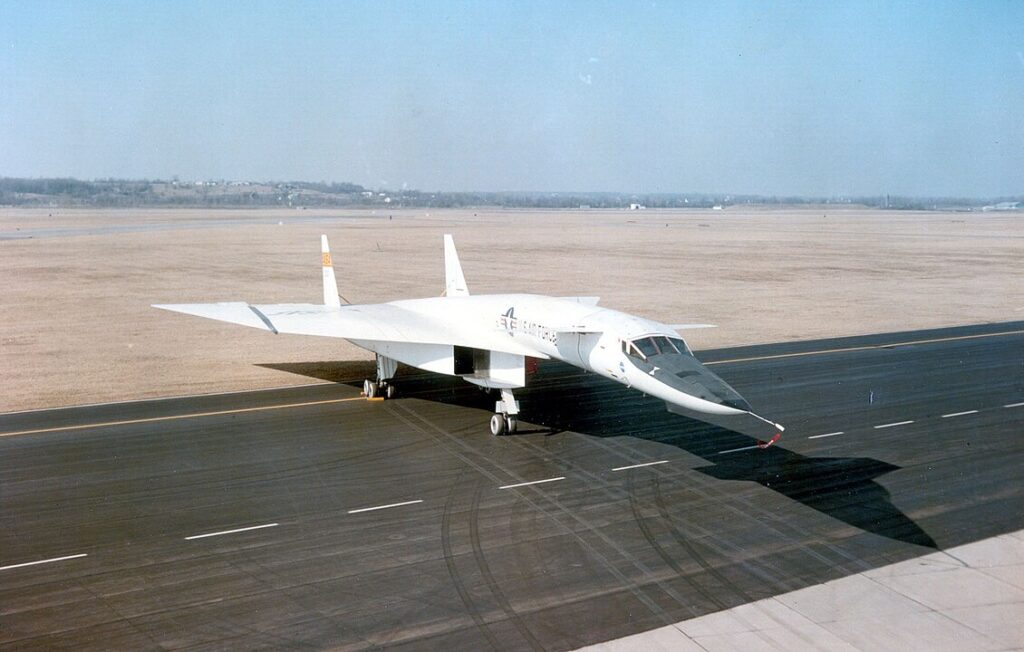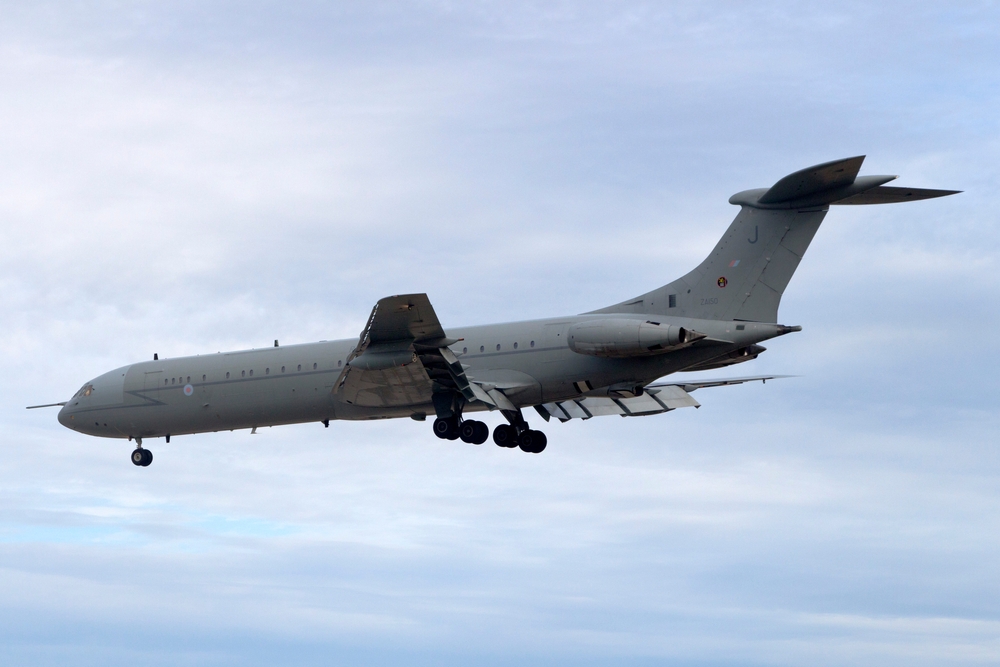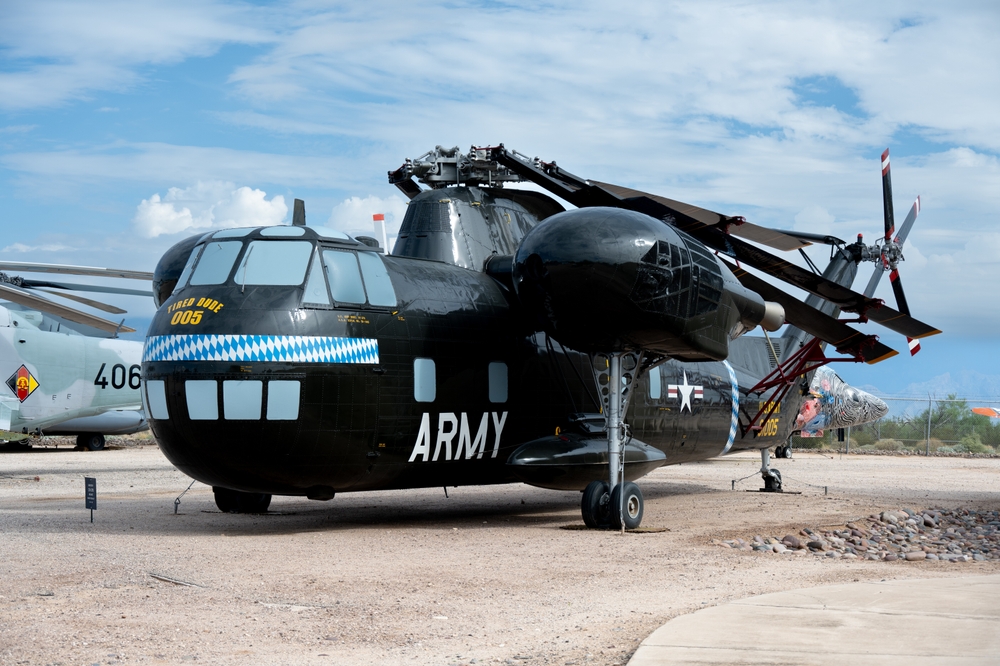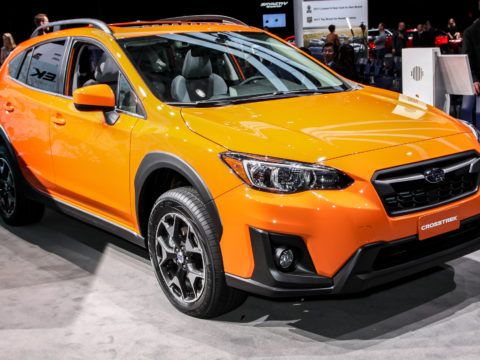Some airplanes make such a mark on aviation that they’re remembered long after their final flights. From groundbreaking commercial jets to military powerhouses, these aircraft once ruled the skies, setting records and defining eras. Now retired, they remain iconic pieces of aviation history that enthusiasts still celebrate. In this list, we’ll look back at 25 legendary airplane models that, though no longer in service, left an unforgettable legacy in the world of flight.
Contents
Concorde

The Concorde was a marvel of aviation, achieving supersonic speeds that halved transatlantic travel time, making it a favorite among elite travelers. Capable of reaching Mach 2.04 (1,354 mph), this jet was known for its slender, pointed nose and droop-snoot design, allowing for better pilot visibility during landing. With only 20 built, it became a luxury status symbol despite its narrow cabin and costly operations. Retired in 2003 due to rising expenses and noise restrictions, the Concorde remains a symbol of speed and technological ambition.
Douglas DC-3

The Douglas DC-3 revolutionized both commercial and military aviation in the 1930s and ’40s with its versatility, reliability, and performance. Featuring a twin-engine, low-wing monoplane design, it could transport passengers comfortably or carry significant cargo loads. The DC-3’s long range and durability allowed it to operate on short, rugged airstrips, becoming a valuable asset during WWII. Its legacy as a dependable workhorse has led to its continued use in some parts of the world even today, nearly a century after its first flight.
Lockheed SR-71 Blackbird

The SR-71 Blackbird is an iconic reconnaissance aircraft that broke speed and altitude records during its Cold War service, flying at Mach 3.2 at 85,000 feet. Its titanium construction enabled it to withstand intense heat generated at high speeds, and its radar-deflecting design foreshadowed stealth technology. The Blackbird’s ability to gather intelligence while outrunning enemy missiles made it indispensable, and its retirement in 1999 marked the end of an era in spy technology and high-speed aviation.
Boeing 707

As one of the first successful commercial jets, the Boeing 707 helped popularize jet air travel in the late 1950s. With a four-engine design, it offered passengers a faster, more comfortable flight experience compared to propeller-driven planes. The 707’s introduction marked a new era in global travel, as airlines expanded routes and decreased flight times. It set the standard for future jet airliners, making it a true pioneer in commercial aviation history.
Lockheed L-1011 TriStar

The L-1011 TriStar was a wide-body airliner with innovative features, such as an advanced autopilot system and quiet, rear-mounted engines that improved cabin comfort. Known for its stability and safety, the TriStar was particularly favored by passengers for long-haul flights. Despite being ahead of its time technologically, production issues and competition from the DC-10 limited its success. It remains celebrated for its comfort and technological contributions to commercial aviation.
Avro Vulcan

The Avro Vulcan was a delta-wing strategic bomber that served the Royal Air Force during the Cold War. Its unique design enabled it to reach high altitudes and carry heavy payloads, including nuclear weapons. Known for its distinctive, bat-like shape and ability to perform impressive aerial maneuvers, the Vulcan was both a deterrent and a symbol of British air power. It remained in service until 1984 and still fascinates aviation enthusiasts worldwide.
Boeing 727

The Boeing 727’s versatility as a trijet made it a favorite for short- and medium-haul routes, especially on smaller runways. Its rear-engine configuration allowed for quieter cabin conditions, and the plane was known for its smooth handling and durability. Introduced in 1964, the 727 became one of the best-selling aircraft of its time. It played a significant role in expanding air travel globally and remains celebrated as a workhorse of commercial aviation.
McDonnell Douglas DC-10

The DC-10, a wide-body trijet, brought long-haul capabilities to commercial aviation with spacious cabins and reliable performance. Despite early mechanical issues, the DC-10 eventually became trusted for its durability and range, serving airlines worldwide. Its distinctive third engine on the tail set it apart visually and functionally, making it a memorable model that helped bridge the gap between mid-size and jumbo jets.
Grumman F-14 Tomcat

The F-14 Tomcat became an American aviation icon, especially after its starring role in Top Gun. Known for its variable-sweep wings and advanced radar, the Tomcat excelled as a long-range interceptor for the U.S. Navy. Its powerful engines allowed for high speeds and maneuverability, making it a formidable fighter. Retired in 2006, it remains celebrated for its distinctive design and combat capabilities.
de Havilland Comet

The de Havilland Comet was the world’s first commercial jetliner, marking a groundbreaking moment in aviation history. Its sleek, pressurized cabin allowed it to fly at higher altitudes and faster speeds, transforming passenger expectations. Though early structural issues led to several accidents, the Comet set the stage for future jetliners, leaving a lasting legacy despite its brief operational life.
Tupolev Tu-144

The Tupolev Tu-144 was the Soviet Union’s supersonic answer to the Concorde, reaching speeds of Mach 2.15. Though initially impressive, the Tu-144 faced reliability issues that led to a short commercial life. Despite its challenges, it remains significant as a milestone in Soviet aviation and as a rare example of Cold War competition extending to supersonic flight.
Lockheed Constellation

The Lockheed Constellation, known for its distinctive triple-tail design, was a luxury airliner of the 1940s and ’50s, offering unparalleled range and comfort. Often referred to as the “Queen of the Skies,” the Constellation connected continents and served as Air Force One for President Eisenhower. Its speed and style made it a beloved aircraft, and it helped set the standard for long-distance air travel.
Boeing 747-100

The Boeing 747-100, the original “Jumbo Jet,” revolutionized long-haul travel with its double-deck design and massive passenger capacity. Capable of carrying over 400 passengers, it made international travel more accessible and economical. Introduced in 1970, the 747-100 remained in service for decades, cementing its place as one of the most iconic aircraft in history.
BAC One-Eleven

The British BAC One-Eleven was a short-haul jetliner introduced in the 1960s, popular for its efficiency on shorter routes. Its straightforward, durable design made it a favorite among European airlines, helping to standardize jet travel for regional routes. The One-Eleven’s reliability and adaptability allowed it to serve in various roles well into the 1990s.
Fokker F28 Fellowship

The Fokker F28 Fellowship was a regional jet known for its ruggedness and adaptability, making it ideal for smaller airports with shorter runways. Its straightforward design allowed easy maintenance, making it cost-effective for airlines. The F28’s role in pioneering regional jet service gave it a lasting legacy in short-haul aviation.
Antonov An-22

As the world’s largest turboprop, the Antonov An-22 was designed for heavy cargo transport, particularly in remote regions. Known for its massive wingspan and lifting capabilities, the An-22 excelled in carrying oversized loads for the Soviet Union. Its unique size and power make it a rare marvel in aviation history.
North American XB-70 Valkyrie

The XB-70 Valkyrie was an experimental bomber capable of reaching speeds over Mach 3, designed for strategic nuclear missions. Its massive, delta-wing design and high-speed capabilities made it one of the most advanced aircraft of its time, though it was ultimately canceled. Its short career still left an impact, showcasing extreme engineering capabilities.
Vickers VC10

The British Vickers VC10 featured rear-mounted engines, which allowed for a quieter cabin experience. Known for its smooth, stable ride, it excelled in “hot and high” conditions, making it popular in Africa and the Middle East. Its elegance and specialized capabilities earned it a dedicated following despite limited production.
Convair 880

The Convair 880 was an early jet airliner known for its sleek, streamlined design and fast cruising speeds. Though not as commercially successful as its competitors, the 880’s speed and style made it a memorable player in the early days of commercial jets, appealing to airlines that prized speed over capacity.
Sikorsky CH-37 Mojave

The Sikorsky CH-37 Mojave was a heavy-lift helicopter used by the U.S. military, notable for its large fuselage and cargo-carrying ability. Capable of transporting vehicles and artillery, it played a crucial role in the 1950s and ’60s. Its unique size and design made it a workhorse in challenging conditions.
Martin B-26 Marauder

The Martin B-26 Marauder was a WWII medium bomber known for its speed and resilience under fire. It carried out numerous successful bombing runs in Europe and the Pacific, earning a reputation as one of the safest aircraft for its crew. Its contribution to Allied success in WWII secures its place in aviation history.
Curtiss C-46 Commando

The Curtiss C-46 Commando was a WWII transport aircraft valued for its ability to operate in rugged environments, especially the challenging “Hump” route over the Himalayas. Its twin-engine design and high payload capacity made it invaluable for carrying troops and supplies in hostile terrain, ensuring its legacy.
Beechcraft Starship

The Beechcraft Starship was an innovative aircraft with a unique canard design and all-composite structure. Introduced in the 1980s, it aimed to be a cutting-edge business aircraft, though its high costs limited success. Its striking design and engineering advancements make it a rare but notable part of aviation history.
Handley Page Victor

The Handley Page Victor served as a Cold War bomber and later as an air refueler for the RAF. Its sleek, crescent-wing design allowed it to perform long-range missions, and its role in the Falklands War extended its service life. The Victor’s adaptability and distinctive look give it a lasting place in aviation lore.
Fairey Swordfish

The Fairey Swordfish was a WWII British torpedo bomber, famous for its role in sinking the German battleship Bismarck. Despite its outdated design, it performed admirably in anti-submarine and night bombing roles. The Swordfish’s effectiveness against more advanced aircraft underscored its importance in wartime aviation.
This article originally appeared in MyCarMakesNoise.
More from MyCarMakesNoise
15 Budget-Friendly Off-Road Vehicles for Thrill-Seekers

Exploring the great outdoors doesn’t have to come with a hefty price tag. For those who crave adventure but are mindful of their budget, plenty of off-road vehicles offer both affordability and impressive performance. From rugged SUVs to versatile trucks, these vehicles are designed to handle rough terrains without breaking the bank. Read More
10 Little-Known Facts About the Iconic Ford Mustang

The Ford Mustang, an enduring icon of American automotive culture, has captivated car enthusiasts since its debut in 1964. Known for its sleek design, powerful performance, and unmistakable emblem, the Mustang’s rich history is filled with intriguing details that have contributed to its legendary status. Read More
15 Misconceptions About SUVs That Need to End

SUVs have become a popular choice for drivers, but there are plenty of misconceptions surrounding these vehicles that can be misleading. Whether it’s about safety, fuel efficiency, or handling, many drivers hold onto outdated or false beliefs. Read More














